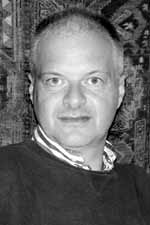| 
Indiana
University Press announces
plans
to publish Van Pelt's report on the Lipstadt trial
and his expert evidence [First
chapter (65 pages) of Van Pelt's book on the
Lipstadt Trial, posted for research purposes
only as a
read-only pdf file, 750k] | Forthcoming
The
Case for Auschwitz Evidence
from the Irving Trial Robert Jan van Pelt  In this absorbing account of the much
publicized David Irving libel trial, an
expert witness analyses the historical
evidence for the gas chambers at Auschwitz
and refutes negationists' claims to the
contrary.
[printed catalog
text: "... and refutes Holocaust deniers'
claims that they didn't
exist"]
"The Irving case has done for the new
century what the Nuremberg tribunals or
the Eichmann trial did for earlier
generations." -- The Daily
Telegraph
From January to April 2000 a
high-profile libel
case brought by the British historian
David Irving against Penguin Books
and Deborah Lipstadt, charging that
Lipstadt's book,
Denying the
Holocaust (1993), falsely
labeled him a Holocaust denier, was tried
in the British High Court. The question
about the evidence for Auschwitz
as a death camp played a central role in
these proceedings. Irving had based his
alleged denial of the Holocaust in part on
a 1988 report
by an American execution specialist,
Fred
Leuchter, which claimed that there
was no evidence for homicidal gas chambers
in Auschwitz. In connection with their
defense, Penguin and Lipstadt engaged
architectural historian Robert
Jan van Pelt to prepare for the
court an expert report presenting the
evidence for our knowledge that Auschwitz
had been an extermination camp where up to
one million Jews were killed, mainly in
gas chambers. |   Forthcoming Forthcoming
Cloth 0-253-34016-0 $45.00
Robert Jan van Pelt is Professor in the
School of Architecture, University of
Waterloo, Canada. He is coauthor (with
Debórah Dwork) of Auschwitz: 1270
to the Present, winner of a National
Jewish Book Award, 1996, and of the Spiro
Kostof Award of the Association of
Architectural Historians, 1997, and
coauthor (with Carroll William Westfall)
of Architectural Principles in the Age of
Historicism. Specs: 464 pages, 7 x 10, 130 b&w
illus., notes, bibl., index
TABLE
OF CONTENTS - The Case for
Auschwitz
- Evidence from
the Irving Trial
By
Robert Jan van Pelt - Preface
and Acknowledgments
- 1.
The Negationists' Challenge to
Auschwitz
- 2.
Marshaling the Evidence for
Auschwitz
- 3.
Intentional Evidence
- 4.
Confessions and Trials
- 5.
"Witnesses Despite
Themselves"
- 6.
Auschwitz at the Irving
Trial
- Epilogue
- Abbreviations
- Notes
- Bibliography
- Index
| Employing painstaking historical
scholarship, van Pelt submitted an
exhaustive forensic report, which he
successfully
defended in cross-examination in
court. In his verdict in favor of the
defendants, Mr. Justice Charles
Gray concluded that "no objective,
fair-minded historian would have serious
cause to doubt that there were gas
chambers at Auschwitz and that they were
operated on a substantial scale to kill
hundreds of thousands of Jews." The Case for Auschwitz analyzes why
Auschwitz has become central to Holocaust
denial and how it became a focus in the
Irving-Lipstadt trial. It presents the
compelling evidence contained in the
original expert report and details the way
this evidence played out at the trial.
Unique in its comprehensive assessment of
the historical evidence for Auschwitz and
devastating in its demolition of the
arguments of Holocaust deniers against
Auschwitz, van Pelt's book is essential
reading for anyone interested in the
history of the Holocaust and for those who
seek to combat Holocaust denial. |
[Hyperlinks and
images above added by this
website]
Related files on this website:  Index to Van Pelt
Index to Van Pelt In which
Professor Robert Jan Van Pelt testifies on oath
January 25, 2000 during the Lipstadt Trial that
he has no plans to publish his Report as a
book
In which
Professor Robert Jan Van Pelt testifies on oath
January 25, 2000 during the Lipstadt Trial that
he has no plans to publish his Report as a
book D J C Irving vs. Penguin Books Ltd &
Lipstadt, Day 9, January 25, 2000, pages
43-45 (Verbatim
transcript by kind permission of Harry
Counsell & Company)
D J C Irving vs. Penguin Books Ltd &
Lipstadt, Day 9, January 25, 2000, pages
43-45 (Verbatim
transcript by kind permission of Harry
Counsell & Company)
|
|